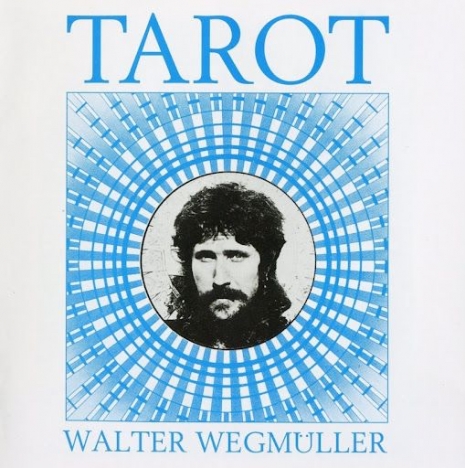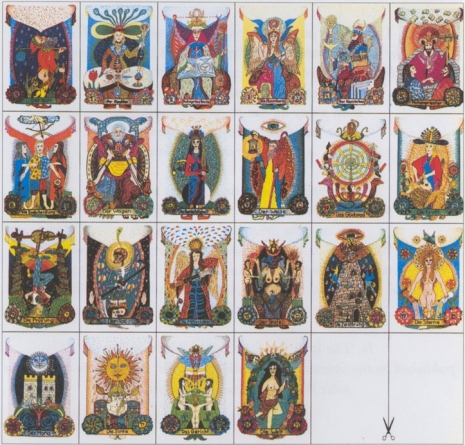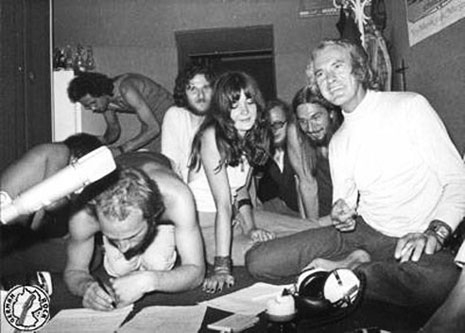
If you haven’t heard, there’s a new Julian Cope book coming out and even compared to his other incredibly worthwhile publications (The Modern Antiquarian and The Megalithic European, extensive studies of Britain’s and Europe’s ancient stone circles megalithic sites, the classics Japrocksampler and Krautrocksampler and his hilariously honest autobiographical accounts of the Liverpool punk scene and his own rock stardom in Head On and the follow-up, Repossessed) this one looks like a complete motherfucker.
It’s 768 pages to lose yourself in and discover new things. A signed, deluxe edition of 250 will come with three CDs. Here’s the description from the publisher, Faber & Faber’s website:
Julian Cope’s Copendium is his re-imagining of a useful canon of popular music, which is set to become required reading. It’s available initially in a limited and highly collectable edition (see below) - with a standard edition due in November 2012.
Copendium comprises a collection of album reviews and themed track samplers that lay out an alternative history of the last six decades of popular music, written by the visionary musician, antiquarian and musicologist. The result is a feast of obscure and neglected masterworks; Krautrock, motorik and post-punk, stoner and doom metal, occasionally even jazz, spoken word and hair metal.
Julian Cope is the perfect guide to this novel terrain: impeccably informed, passionate, insightful and deeply funny.
The fact is, for many people—and I am very definitely in this camp, myself—a musical recommendation from Julian Cope is practically a decree to get your hands on something, the same way it was when Lester Bangs wrote about The Stooges, Lou Reed or The Clash. Cope’s wild-eyed passion for convincing you, his reader, that you need, nay MUST have this deep rock and roll epiphany that he has had and that some obscure or overlooked album is a very real and necessary shamanic rite of passage, is, for me, frankly irresistible. The quality of his prose is second to none (I detect the influence of Bangs, yes, but also John Sinclair or Mick Farren in his more polemic essays) and he’s just got fucking phenomenal taste.
Truly, there is no better guide, none, to the hidden history of the last six decades of music, both popular and otherwise, than Julian Cope. Over the years, I have been turned on to so much amazing, life-enhancing, life-changing music that I feel like I owe him a heartfelt public thank you. Has anyone written as passionately about music since the death of Lester Bangs, than Julian Cope? Not one writer comes to mind.
It was via Cope’s Fire Escape in the Sky: The Godlike Genius of Scott Walker compilation that I first heard of Scott Walker, for instance, inspiring at least a ten-year long Scott Walker obsession for me. And it was Cope’s brilliantly written assessment of Miles Davis’s “difficult” electric phase of the early to mid-70s that saw me dive deeply into those funky waters (and a year-long period where I listened to practically nothing else—my neighbors must have hated my fucking guts!).
Hell, I first picked up on Faust due to Julian Cope (this alone calls for more than a public thank you—perhaps naming a child after him?). The Taj Mahal Travellers? Never heard of ‘em before Japrocksampler, now I am obsessed with their music. I could go on and on.
In fact, here’s something that I was turned onto just this very morning via Cope’s writing on his Head Heritage website. My introduction to Ash Ra Tempel came via their Seven Up collaboration with Timothy Leary. It’s not an easy thing to listen to (the band and Leary were tripping on LSD when they recorded it) and is something that I filed away with my collection of Timothy Leary memorabilia (not my CDs), probably never to listen to again, frankly. I was not interested in hearing more. However, this morning I came across this essay, from 2000:
Ash Ra Tempel’s first two LPs had taken the metal of Detroit to heights not even considered by the MC5 or the Stooges or even Funkadelic. Sure those groups had got close on stage. But Ash Ra Tempel got it on record. While the collective Detroit obsession with the Outer-spacings of Sun Ra and the free-jazz innervisions of John Coltrane had been tamed beyond recognition by the American record industry, Ash Ra Tempel suffered no such disappointment. And those searching for the fulfilment of the Detroit promise need have looked no further than Ash Ra Tempel in 1971. There’s a part of Iggy Pop’s autobiographical I Need More in which he writes (p.17) about the early Stooges sound thus:
“...I’d play this sort of wild Hawaiian guitar with a pick-up that I invented, which meant that I made two sounds at one time, like an airplane…using 55-gallon oil cans which I got from a junkyard and rigged up as bass drums, I home-made a drumset. For drumsticks I designed these semi-plastic moulded hammers. Scotty beat the shit out of these cans; it sounded like an earthquake – thunderous… It was entirely instrumental at this time, like jazz gone wild. It was very North African, a very tribal sound: very electronic. We would play like that for about 10 minutes. Then everybody would have to get really stoned again…But what we had put into 10 minutes was so total and so very savage – the earth shook, then cracked, and SWALLOWED ALL MISERY WHOLE.” (my capitals)
Music that Swallowed All Misery Whole…
In the first two Ash Ra Tempel LPs, Ash Ra Tempel and Schwingungen, they had captured on record All that Iggy Pop had promised Could Be but, because of Record Industry Hang-ups, had been unable to deliver. And this music which could Swallow All Misery Whole reached into the core of each musician who played in Ash Ra Tempel and pulled out, still wriggling, the cosmic conger eel of white light which so few artists ever capture in the Moment of Recording.
For years, I had drooled over that description in I Need More. I’d shown many friends that passage – I had bored them with it. And all the time Ash Ra Tempel had already done it in 1971… But it was not without a price. The first LP was by a Kosmische power-rock trio of gargantuan size. The 20-minute opening track “Amboss (Anvil)” was all of Iggy Pop’s above description and more. Sure it was a fucking cosmic freakout. But it was played by Renaissance Man and Cosmic Man at the same time.
Fuck Jim Morrison’s ridiculous “Renaissance Man of the Mind” description.
That was just an excuse to be a fat slob.
That was just an existentialist knee-jerk.
No. No. No.
These freaks were fit. Superhuman. Superman.
They were here to go. But all in good time. And they had staying power over 20-minute tracks. On “Amboss”, Klaus Schultze plays drums like a hundred drummers. He’s not twice as powerful, he’s a hundred times as powerful. Hartmut Enke, the spiritual leader of the band, hits his Gibson bass the way only a giant could: the huge extra-longnecked she-bass was courted, cajoled and ultimately goosed into action by this huge handsome freak they all called The Hawk. And Manuel Gottsching plays blues like Clapton, but right alongside pre-emptive Keith Levene white noise and egoless as Lou Reed’s Live 1969 rhythm guitar freakouts. The interplay is so intuitive that frequently it’s impossible to hear the instruments — you just hear the Music. And the LP was housed in yet another of Ohr Records’ extravagant packages — a centrally opening gatefold with an Ancient Egyptian exterior, a freaky occult gematriac interior, and a tragically beautiful Head poem that began: “I saw the best minds of my generation destroyed by madness staring hysterical naked, dragging themselves through the Negro streets at dawn looking for an angry fix.”
After the jump, hear “Amboss” by Ash Ra Tempel…
Posted by Richard Metzger
|
07.24.2012
01:13 pm
|










